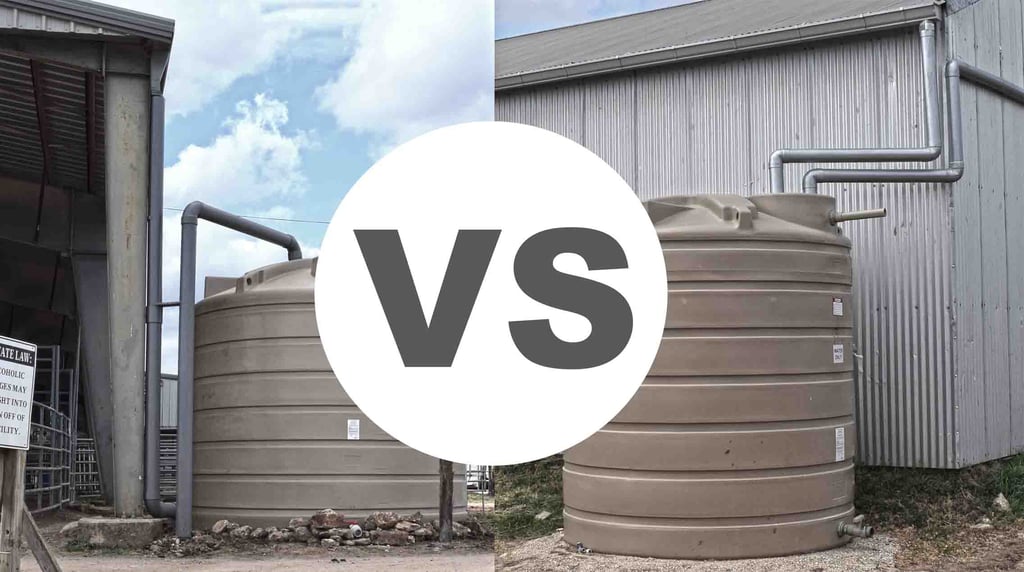
When installing a rain harvesting system, the hardest part to plan is how your plumbing is going to be configured. In this article, you will learn about two popular ways to plumb your water storage tanks so you can harvest rain water the right way. These plumbing configurations are called 'Dry' systems and 'Wet' systems. I decided to gather all the pros and cons of each plumbing configuration to help you make the right decision for your setup.
'Dry' System Plumbing
A 'dry' system plumbing configuration is when you direct the water from your roof to your tank without it going underground. The reason it is referred to as 'dry' is because when it is not raining, the pipes stay dry. Below are the pros and cons of this style of plumbing.
Pros
- Cheaper to install because there is less pipe and joint fittings.
- Quicker to install because you don't have to bury any pipes.
- There is no need to drain your pipes because the water is always drained out after the rain stops.
- It is easy to move your tank position because there is minimal plumbing to change.
Cons
- You have to install your water storage tank close to the roof on your house or building.
- There is more pipe exposed which could end up looking messy.

'Wet' System Plumbing
A 'wet' system plumbing configuration is a lot more complex but in most cases more secure. This style of plumbing directs the water from your roof, underground, through pipes and up to your rain harvesting tank. The reason it is referred to as 'wet' is because when it is not raining, the pipes underground stay wet. Unless they are drained. Here are some pros and cons of this style of plumbing.
Pros
- You can move your rain harvesting tank away from your roof.
- Can look much neater than a 'dry' system because there are minimal pipes exposed.
Cons
- If it doesn't rain for a long time, water will sit in your pipes underground. This can become a breeding ground for mosquitos.
- You have to occasionally drain your pipes underground to remove old water or debris.
- Will be more expensive because you have to purchase more pipe and joint fittings.
- Takes longer to install because you have to dig a hole to bury your plumbing.

So, which one do you choose?
It really depends on your property layout. If you care a lot about the looks of your rain harvesting system and you are planning to make it a permanent addon to your home, I would choose the 'wet' system option. If you have a tight budget and you don't have any time to maintain it, I would choose the 'dry' system plumbing configuration.
I hope this comparison give you a better understanding of how these systems work. And most of all, I trust this article teaches you which option you should choose for your rain harvesting system. If you have already installed your rain harvesting system and have more pros or cons to add, write a quick comment below and I will add them.


